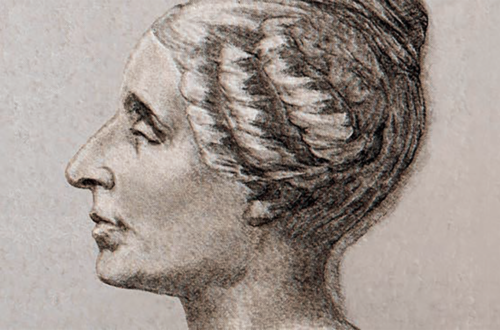Darcy House
The following letter was sent to Minister of Education Adriana LaGrange on March 30, 2021. Minor changes have been made to fit ATA style.
Dear Minister LaGrange,
I am a secondary mathematics teacher, concerned parent to a young child, volunteer on the Mathematics Council of the Alberta Teachers’ Association (MCATA), graduate student at the University of Al-berta and member of the Métis Nation of Alberta.
I could not have been more disappointed upon reading through the proposed elementary mathematics curriculum. This new curriculum disservices Alberta. It disservices my child and those children of my fellow Albertans.
There were 14 references to First Nations, Métis and Inuit knowledges within these draft documents, 11 of which appeared in the K–3 section of the documents. None of the references appeared in Grade 6, nor did any of these references provide valuable in-sight into the relational nature of Indigenous world views. This mathematics curriculum quite literally phases out Indigenous Peoples by the time students reach Grade 6.
Much more concerning was the complete lack of educational form within the documents. There is little to suggest that the authors have spent any time thought-fully addressing the valuable insights that Indigenous knowledge might provide educators as we strive to improve educational outcomes not only for Indigenous students but for all students in Alberta.
While these are huge shortcomings, my greatest concern is the framing of Indigenous knowledges as those of otherness throughout the draft document. This process, which I have come to recognize by its similarity to hydrographic art, disguises colonial knowledge as Indigenous knowledge and displaces Knowledge Holders and Elders from places of respect, history, story and relation within the classroom. I have a couple examples to share with you.
In Grade 1, the authors of this document suggest that “First Nations, Métis, and Inuit experience time through sequences and cycles in nature, including cycles of seasons and stars.” But there is no mention of our responsibilities to care for one another as we each experience the (often violent) cycles of earth we are familiar with in Alberta, nor our responsibility to care for those around us when they are experiencing more difficult cycles than us.
In Grade 2, the authors reduce a valuable cultural learning opportunity to “re-late First Nations’ winter counts to duration.” Where-as duration refers to a specific length of time and is often used to erase humanity in between, the cultural practice of winter counts embeds memory inside place and symbol and re-minds us of the stories that are lived.
In Grade 4, students are required to “recognize the rearrangement of area in First Nations, Métis, or Inuit design.” This example makes my hydrographic concerns more clear. Your curriculum developers have disguised critical mathematical discernments as those of the concerns of Indigenous design. While the curricular intention is clearly to inquire into the rearrangement of objects to cover equal area—a discernment that I use regularly in my Math 20-3 program to prove the Pythagorean theorem—the implication of this skills and procedures outcome is that this discernment is of primary concern to Indigenous artists as they produce artwork.
In Grade 5, a knowledge outcome is stated as “symmetry can be found in First Nations, Métis, and Inuit design.” This demonstrates the otherness of Indigenous knowledge within this document; it isn’t even hidden away. A concept from elsewhere, symmetry, is painted onto the design of Indigenous artists and coerces students to understand the art through a particular lens, with no attempt by your curricular authors to address our relations through the artist, nor through the story they tell. They assume the artist’s intention is symmetry. The concept of symmetry is not enough for these authors to have fully articulated what has been created.
I am concerned that your curriculum might further widen the educational debt owed to Indigenous Peoples. It is clear to me that little attention has been paid to the relations this curriculum will disrupt. I am afraid that, in its current form, this curriculum will continue to miseducate young Albertans. I do hope that your finalized version is not quite so disappointing.
Thank you for your time and consideration.
Sincerely,
Darcy House
Darcy House, BSc, BEd, is a member of the Métis Nation of Alberta, a mathematics and science teacher with the Inner City Youth Development Association in Edmonton, and MCATA’s treasurer. Visit his web-site at https://darcyhouse.ca.






